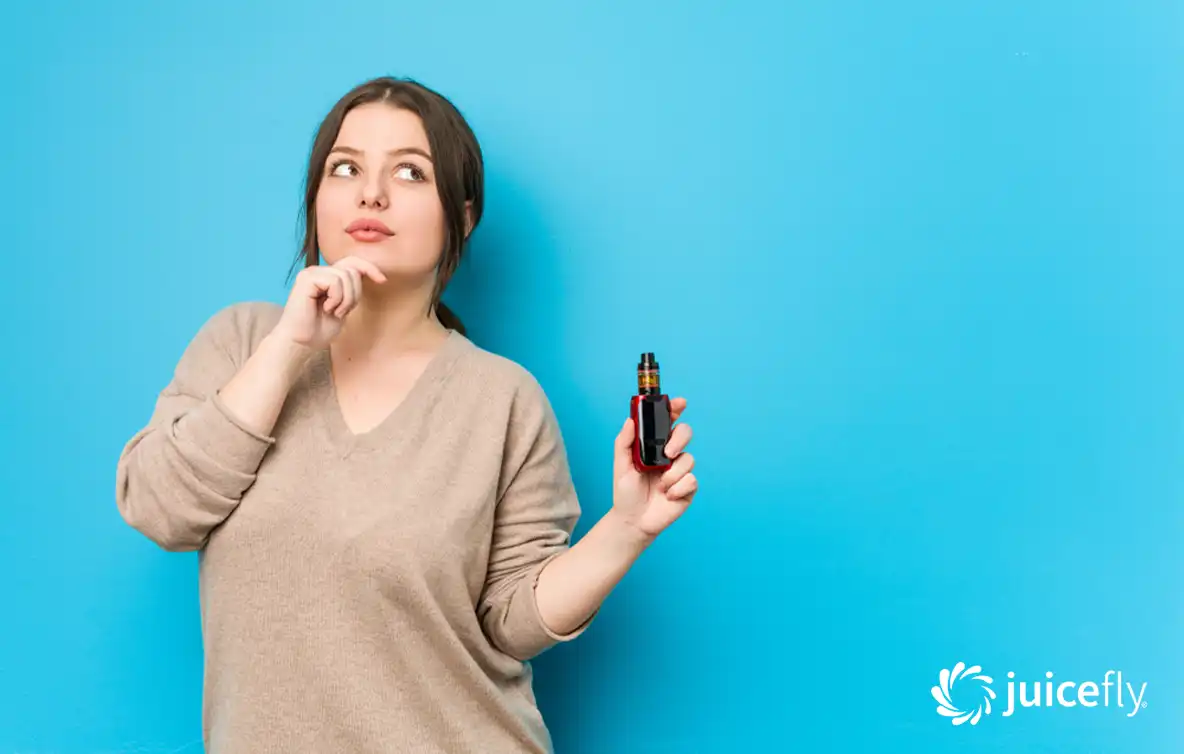
In this era of disposable culture, it’s easy to forget that even our high-tech devices aren’t invincible. We apply the concept of expiry to food and medicines, but seldom consider that vapes too have a shelf life.
Here we focus on the lifespan of vaping devices and break down signs to watch out for before they take their last puff.
Get ready to think about your vape in a new light – as something with a finite existence that needs timely maintenance and, eventually, replacement.
Ensuring a top-quality vaping experience not only enhances taste and satisfaction but also helps protect your health. Tune in to avoid being caught off guard by an expiring vape!
Do Vapes Expire?
The question of whether vapes expire is one that often arises among vaping enthusiasts. While vapes don’t have a specific expiration date like perishable food items, they have a limited shelf life.
Similar to other perishable products like milk or motor oil, disposable vapes typically expire within 1-2 years after manufacturing. This means that over time, the quality and performance of the vape device may diminish, affecting the overall vaping experience.
It’s important to note that using an expired vape is not recommended as it may result in a subpar experience with off flavors and weaker hits.
While smoking an expired vape won’t be harmful like eating moldy bread, the nicotine and flavors may have degraded, leading to a less smooth vaping experience.
Signs of an Expired Vape
To determine if your vape has expired, there are several signs to look out for. First and foremost, check the packaging for an expiration date. Many reputable vape brands include this information to guide the freshness of their products.
Apart from checking the expiration date, other indicators indicate that your vape may have gone bad. One common sign is experiencing off flavors while inhaling. If you notice a strange or unpleasant taste when using your vape, it could be a sign that the liquid has deteriorated.
Additionally, weak hits or reduced vapor production can also indicate that your vape device has passed its prime.
Another potential sign of an expired vape is liquid discoloration. If you notice that the e-liquid has changed color significantly or looks cloudy, the ingredients have likely degraded over time.
- Disposable vapes are noted to typically expire within 1-2 years of manufacture, akin to many consumable products.
- Research shows that nicotine in vape juice can oxidize over time, reducing potency and altering taste to a peppery flavor.
- A study indicates that light-sensitive vape juices, if stored appropriately in cool and dark conditions, can maintain their quality and usability for up to 5 years.
The Shelf Life of Vape Devices
Vaping has gained tremendous popularity over the years as an alternative to traditional smoking. However, like any other electronic device, vape devices also have a limited shelf life. So, what is the shelf life of vape devices?
Generally, most vape devices can last one to two years after production when properly cared for and used within recommended limits.

However, it’s important to note that several factors can affect the longevity of these devices.
To understand how long a vape device can last, let’s delve into the factors influencing its longevity.
Factors Affecting Vape Longevity
Numerous elements contribute to the lifespan of a vape device. These factors include temperature, battery quality and capacity, usage frequency, and proper storage. Here’s a closer look at how each factor plays a role:
Temperature: Extreme temperatures can impact the effectiveness and longevity of vape devices. Excessive heat or cold can cause the battery and other components to degrade quickly.
Battery Quality and Capacity: The quality and capacity of the battery can significantly impact how long a vape device lasts. High-quality batteries with larger capacities tend to provide longer-lasting performance.
Usage Frequency: The frequency at which you use your vape device will also affect its lifespan. Regular usage will wear out the coils and other components faster than occasional usage.
Proper Storage: How you store your vape device can significantly impact its longevity. Proper storage includes keeping it away from direct sunlight or extreme temperatures, ensuring it isn’t subject to moisture or humidity, and protecting it from accidental damage.
For instance, if you leave your vape device exposed to direct sunlight for extended periods or regularly subject it to harsh environmental conditions, it will likely deteriorate more quickly.
How to Store Vapes for Prolonged Use
Firstly, keep your vape pens upright. Storing them upright helps prevent leakage and keeps the e-liquid evenly distributed within the device. This ensures consistent flavor and proper functioning.
Secondly, store your vape pens away from direct sunlight. Exposure to sunlight can lead to heat buildup, which may degrade the device’s components and affect the e-liquid’s potency.
Imagine leaving your vape pen on a windowsill exposed to direct sunlight for hours on end. The heat can cause the oil inside to thin out, decreasing flavor and vapor production.
Additionally, avoid storing vape pens near hot surfaces, as excessive heat can also impact the quality of the device and the e-liquid. Heat exposure can cause leaks or damage internal components, leading to potential malfunctions.
Lastly, keeping your vape pens in their original packaging can serve as an extra layer of protection. Packaging is designed to protect against damage that could compromise the contents or functionality of the device.
Effects of Using Expired Vapes
Using expired vapes may not pose significant health risks but can impact the overall vaping experience. As with many consumable products, expiration dates exist on e-liquids and disposable vaping devices for a reason – they indicate when optimal freshness begins to deteriorate.
When a vape liquid expires, it may exhibit signs of degradation such as a degraded taste, change in smell, darker color, or ingredients separating. These changes can affect the flavor and overall vaping experience, diminishing the enjoyment one usually expects.

It’s important to note that there are no set regulations regarding expiration dates on e-liquids or disposable vaping products. Manufacturers generally provide expiry dates two years after manufacturing. While there is no clear evidence suggesting negative health impacts from using expired vape liquids, it’s advised to use fresh liquids to maximize flavor and vapor production.
Consider this scenario: You have a bottle of vape liquid that expired six months ago. When you take a puff, you notice a slightly off taste and less vapor than usual. This discrepancy in performance could be attributed to the fact that the liquid has reached its expiration date.
To extend the lifespan of e-liquid, store it in a dark, cool place to avoid exposure to heat, light, and air. Airtight containers can help preserve the oil and keep it fresh for longer periods.
Impact on Flavors and Nicotine Potency
The passage of time and exposure to air and light can have a noticeable impact on the flavors and nicotine potency of vaping devices. While most vapers know that e-liquids can expire, it’s important to understand how this expiration affects your vape’s taste and nicotine delivery.
When e-liquids expire, the flavors within them can degrade, resulting in a less enjoyable vaping experience. The taste may become muted or off-putting, with a noticeable change in aroma. If you’ve ever tried an expired e-liquid, you might have noticed that it lacks the vibrant and full-bodied flavor profile of a fresh one.
Additionally, expired e-liquids may experience changes in color and consistency. Over time, certain ingredients in the e-liquid may separate or oxidize, leading to a darker hue or even visible separation. This can indicate that the e-liquid is past its prime and should be avoided if optimal flavor is desired.

Imagine looking forward to indulging in your favorite fruity vape juice, only to find out that it tastes bland with an unpleasant aftertaste. It can be quite disappointing!
However, it’s worth noting that despite these flavor changes, there is no evidence to suggest that vaping expired e-liquids poses any health risks. The expiration primarily affects taste rather than safety. So while you may not enjoy the same rich flavors from an expired e-liquid, it is generally safe to consume.
In addition to flavor degradation, nicotine potency may also be affected by the expiration of e-liquids. Over time, nicotine naturally degrades due to exposure to oxygen and other factors. This means that an expired vape juice may deliver lower nicotine levels than its fresher counterpart.
For instance, if you usually vape with 6mg/mL nicotine strength but are using an expired e-liquid, you may find that the nicotine hit is weaker and less satisfying. This can be particularly important for those who rely on vaping as a means of nicotine replacement.
It’s important to note that the lifespan of e-liquids can vary depending on their specific ingredients and storage conditions. Propylene Glycol (PG) based e-liquids generally have a longer shelf life than Vegetable Glycerine (VG) based ones, which may degrade more rapidly. Properly storing your e-liquids in cool, dark places and keeping them tightly sealed can help prolong their freshness.
The impact on flavors and nicotine potency is just one aspect of understanding the shelf life of vaping devices. In the next section, we’ll explore other factors that can affect the lifespan of e-liquids and disposable vapes.

